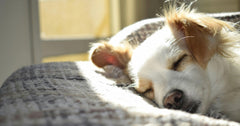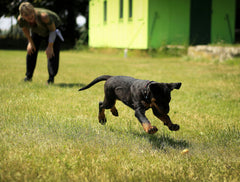
Any cat owner will tell you that their pet is incredibly agile. Cats can jump remarkably high for their bodies. They're quick and agile, often ready to pounce at a moment's notice. Cats can also land on their feet, no matter how they fall. If a cat falls, given enough distance, it will right itself and land on its feet, often allowing it to walk away with minor injuries for what should have been a fall resulting in death.
How does a cat do this, though, and what are the advantages of it? It seems like such a complicated instinct that requires significant muscular coordination in a split-second of time.
How This Skill Helps Cats
There are two ways in which the ability for a cat to right itself during a fall helps. The first is that it reduces the risk of injuries. By landing on their paws, they can cushion the blow to the rest of their body, which, in turn, minimizes the chance of injury or death. This ability is by no means a guarantee that the cat won't die - many have done so falling from significant heights - but instead, it reduces that chance, especially from lower altitudes.
The other benefit is that it slows the cat's speed. When they right themselves, they also spread out to increase drag. This technique is remarkably successful. A human has a maximum velocity of 120 mph, but a cat's speed is half that at 60 mph. The extra drag helps them have a higher probability of surviving a significant fall.
How Do Cats Achieve This Feat?
Much like with humans, a cat's sense of direction is within its inner ear. Cats use this and visual cues to determine which side is up or down. Upon deciding which way is down, the cat proceeds to do three steps.
First, the cat bends in the middle. This motion enables the front half of the body to rotate on a different axis than the rear half. If you think about a cat falling, initially, it's a line - front and back are falling at the same angle. Once the cat bends, it forms an angle (for the sake of simplicity, let's say it's a right angle). Now the front half is rotating along the X-axis, and the back half turns along the Y-axis.
Next, they tuck in their front legs to reduce the moment of inertia in the front half and extend their rear paws to have the opposite effect. This technique enables the cat to rotate their front by up to 90 degrees while the back part of the cat rotates significantly less.
Finally, the cat reverses the above. The cat extends its front paws and tucks in the rear legs to rotate the back half further while the front half rotates less.
If the second and third steps didn't rotate the cat fully, it repeats this motion until the cat has its paws pointed toward the ground. They don't always achieve this with perfect accuracy, but they do try.
It's An Ingenious Survival Trick
If you ever wanted evidence that cats have impressive talents, this is it! No other animal can do this quite like a cat, and it's a remarkable skill to have. And if your pet happens to fall from a high place accidentally, it might just save their life!
Check out our blog and follow me on LinkedIn to stay up-to-date!




